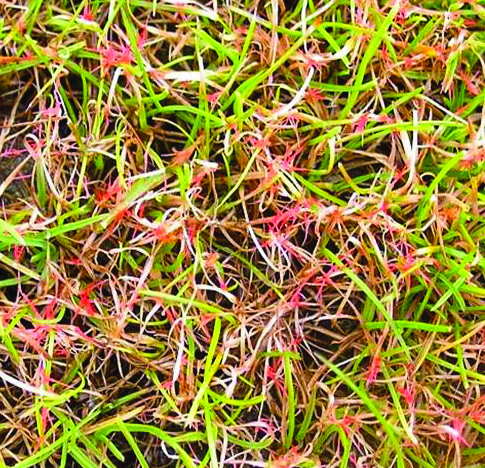Red Thread
Red Thread is caused by the fungus Laetisaria fuciformis and is a common disease on any nutrient-stressed turf. Unbalanced nutrition or low nitrogen (and potassium) availability is likely to encourage disease development, especially in Ryegrasses which have a high nutrient requirement. This disease develops almost invariably in the leaf tissues forming diffuse, coalescing patches of bleached turf that support characteristic red needles (sclerotia) of accumulated fungal mycelium as the infection matures. The mycelium in these red needles will either perpetuate infection by allowing the fungus to grow on to adjacent plants, or will allow the fungus to survive adverse conditions by dropping in to the base of the turf until favourable growth conditions resume.
Red Thread is common during mild, damp weather and leaf wetness is again important for fungal infection.
To minimise disease development, clippings should be removed and scarification or core aeration can help to reduce leaf surface wetness in thatchy turf and reduce the amount of overseasoning sclerotia that may have accumulated during active disease development. An application of nitrogen to affected turf may be all that is required to allow the disease to ‘grow out’ and because the crown tissues are almost never diseased, quick recovery from even the most extensive outbreaks should be achievable.
Fungicides are not generally necessary in an integrated programme for this disease but the available active ingredients will provide control should application be necessary.


